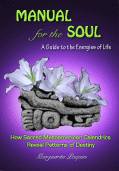Mar 2014
The Chikchan (Lifeforce) Trecena: March 31-April 12, 2014
Posted by in
Trecena Horoscopes, World Events, World Festivals, World leaders
← Back to Horoscope Blog Home
As we come to the close of the Classical Maya year the strong Quetzalcóatl-related forces associated with the Chikchan trecena are now coming into play. Traditionally oriented around the theme of Emergence and Liberation, the Chikchan trecena is generally quite vigorous and inspirational. Indeed, it was the image of the great Feathered Serpent that adorned thousands of books, carvings, and sacred objects prior to the 16th century Spanish intrusion into the Americas.
![Temple of the Plumed Serpent, Morelos, Mexico [Photo Credit: Oldracoon (Own work), CC-BY-SA-3.0 (http://creativecommons.org/licenses/by-sa/3.0), via Wikimedia Commons]](http://whitepuppress.ca/wp-content/uploads/2014/03/Xochicalco-Temple-of-Quetzalcoatl-better.jpg)
Temple of the Plumed Serpent, Morelos, Mexico [Photo Credit: Oldracoon (Own work), CC-BY-SA-3.0 (http://creativecommons.org/licenses/by-sa/3.0), via Wikimedia Commons]
Often a sense of great passion and intensity comes into play during this time frame, in keeping with Chikchan’s resurgence of “Lifeforce” energy. This is a highly transformative force that tends to place emphasis on things such as justice, freedom, higher knowledge, and even the triumph of lifeforce over death.
![Conquistadores entering Tenochtitlan [By Margaret Duncan Coxhead (Romance of History, Mexico), Public domain, via Wikimedia Commons]](http://whitepuppress.ca/wp-content/uploads/2014/03/Conquistadors-enter-tenochtitlan.jpg)
Conquistadores entering Tenochtitlan [By Margaret Duncan Coxhead (Romance of History, Mexico), Public domain, via Wikimedia Commons]
This idea of freedom and the opening up of new possibilities seems to be a common theme during this sequence. By some “coincidence” this energy was coming into play when Hernan Cortés and his conquistadores accepted the surrender of the Aztecs at Tenochtitlan on the first day of this trecena in 1521, after defeating them in a fierce battle.
That same One Chikchan energy was also in place at the dedication of the Statue of Liberty in New York in 1886 – with the reopening of that statue (after renovations) taking place on the second day of this time frame in 2012.
![Auguste Bartholdi, Liberty-Enlightening-the-World. Dedication banner October 28, 1886 (One Chikchan) [Photo Credit: Jdontfight (Own work), CC0, via Wikimedia Commons]](http://whitepuppress.ca/wp-content/uploads/2014/03/Statue-of-Liberty-1886.jpg)
Auguste Bartholdi, Liberty-Enlightening-the-World. Dedication banner October 28, 1886 (One Chikchan)
[Photo Credit: Jdontfight (Own work), CC0, via Wikimedia Commons]
One hundred years ago it was this trecena that kicked off the German invasion of Belgium and Britain’s declaration of war against Germany at the beginning of WWI. Just over 52 years before that the opening shots that started the “main events” of the American Civil War were fired during this trecena.

Armistice Day, Paris, 1918 (Maya Date: 2 Kimi). Watercolour and chalk by Frank Boggs (1855-1926). Location: Metropolitan Museum of Art, via Wikimedia Commons
Fortunately, however, this is also the energy that can turn the tide AWAY from war, as happened when World War I ended during this trecena in 1918, precisely six Tzolk’in cycles after it began.
So the Maya New Year that comes in on 3 Manik’ (April 2nd) brings a return of the energy that was in place on the first day of peace after the end of World War I, the energy that was in place when Japanese Prime Minister Morihiro Hosokawa declared (in 1993) that World War II was a mistake and an act of aggression, and the energy that was in place when Venezuelan President Hugo Chavez took Pres. G.W. Bush to task (in 2005) for waging war in Iraq without UN authorization, based on faulty assumptions. The eighth day of this trecena will also mark a return of the energy that was in place 20 years ago when Nelson Mandela won the election in South Africa to become its first democratically elected president.
Let’s hope that at this time, as the ominous shadow of war lurks on the borders of Ukraine, that the “justice and liberation” forces of this trecena will help to guide those negotiators who are currently working though the difficult task of finding solutions with regard to the situation in that region.
![spectacular solar eruption on June 7, 2011 (13 Kab'an) [PhotoCredit: www.youtube.com/user/SDOmission2009 (http://www.youtube.com/watch?v=2WjoFGPiqXQ), CC-BY-3.0 via Wikimedia Commons]](http://whitepuppress.ca/wp-content/uploads/2014/03/solar-ejection-June-7-2011.jpg)
spectacular solar eruption on June 7, 2011 (13 Kab’an) [PhotoCredit: www.youtube.com/user/SDOmission2009 (http://www.youtube.com/watch?v=2WjoFGPiqXQ), CC-BY-3.0 via Wikimedia Commons]
1 Chikchan (March 31st) – the “initiation” of Lifeforce/Higher Wisdom at the start of the third 52- day period within the 260-day cycle, an intense and highly influential position within the overall cycle; this time this coincides with the second to last day of the current Maya Calendar year
2 Kimi (April 1st) – a dynamic type of energy aligned with “death” or the “return to source”; often manifests as a push-pull type of force that can shake things up and set new foundations for action – this time coinciding with the last day of the Wayeb’ at the end of the current Maya Calendar year
3 Manik’ (April 2nd) – the “activation” of reciprocity, symbolized by a deer that “embodies” the sun on Earth; a kind of harmonizing, “hands-on” energy connected with the natural world, this time in conjunction with the “seating” of Pop, the first month of the Classical Maya year (Maya New Year’s Day)
4 Lamat (April 3rd) – a “defining” energy associated with Venus (the sun and Venus working together), often serving as a beacon or herald
5 Muluk (April 4th) – a “precision” (or “blessing”) type of energy associated with water, this time in conjunction with World Stray Animal Day – a Day for Compassion, Care, and Action for Stray Animals Worldwide [Something that should happen EVERY day!!]
6 Ok (April 5th) – a “love everywhere” type of force that correlates this time with National Tartan Day, generally celebrated by a “gathering of the clans”; Jupiter close to the moon.
7 Chuwen (April 6th) –“self-generating play”, a highly creative “time weaving” type of energy that can sometimes conjure up things of an unusual nature; Jupiter close to the moon.
8 Eb’ (April 7th) – the “resurrection” of the pathfinding energy of vitality, associated with the “dew of life”; a day which the Maya devote to the Celebration of Personal Life, as was in place in 1994 when Nelson Mandela won the election to become the first democratically elected State President of South Africa. This time this energy coincides with the Quebec elections; Jupiter close to the moon.
9 B’en (April 8th) – the “outward projection” of “personal authority”; completion of the first Tzolk’in cycle for little Prince George of England, currently on his first overseas tour, with his parents in New Zealand. On this day Mars is at opposition, close to Earth, and visible from sundown to sunup.
10 Ix (April 9th) – a “source” based energy associated with the jaguar and the mysteries of the earth; as when Chile’s Puyehue volcano erupted under this influence in 2011 for the first time since 1960, sending a thick plume of smoke and ash 10 km. high and forcing the evacuation of 3500 people
11 Men (April 10th) – “inspirational Eagle” – a Burner Day that can bring change or a new form of Higher Vision, as when the discovery of water on Mars was announced under this influence in 2008
12 Kib’ (April 11th) – a “gathering together” type of energy, associated with the ability to “survey”, clean things up, and ultimately restore order
13 Kab’an (April 12th) – transformational movement (or earth movement), a powerful force that can bring either heavy weather conditions, or significant “movement” of an evolutionary nature
**********************************
[Please note that the brief descriptions of the days provided above are only “thumbnail sketches”. Much greater detail can be found in Manual for the Soul: A Guide to the Energies of Life.]

 An in-depth analysis of the energies encoded in the Sacred Maya Calendar and the impact of those energies on daily life.
An in-depth analysis of the energies encoded in the Sacred Maya Calendar and the impact of those energies on daily life. 